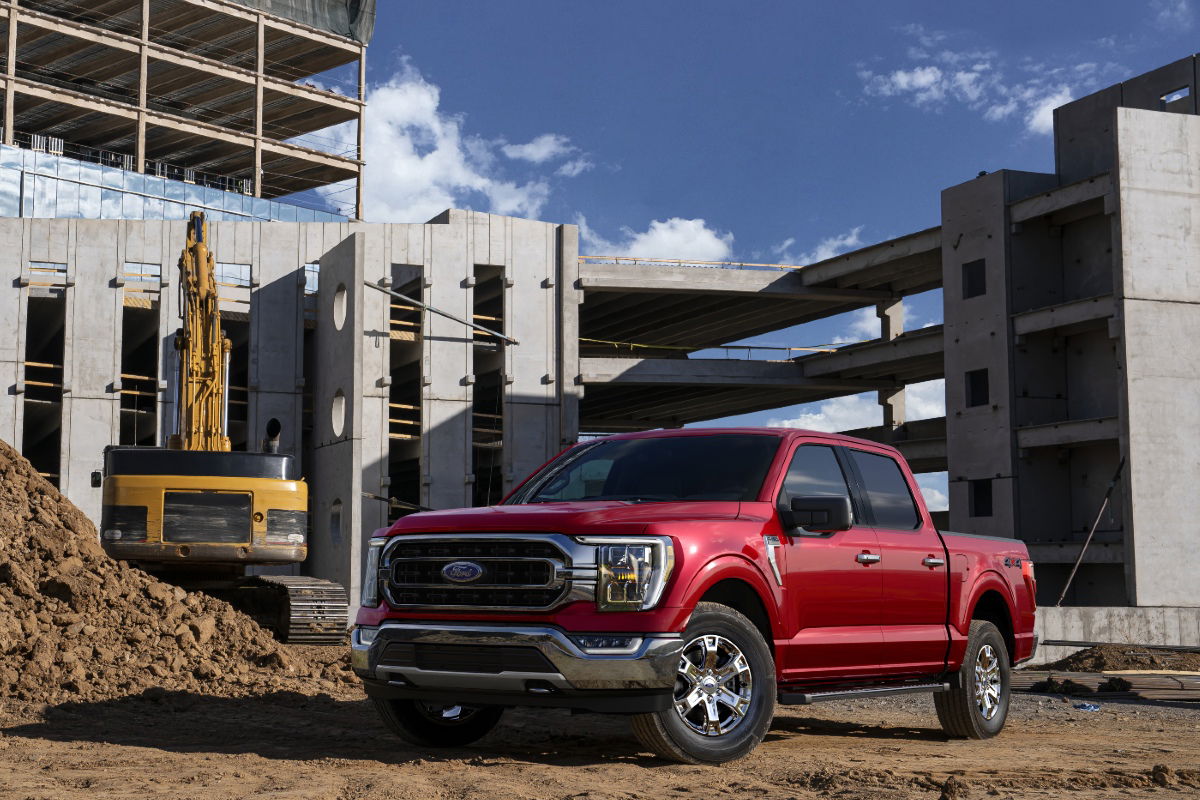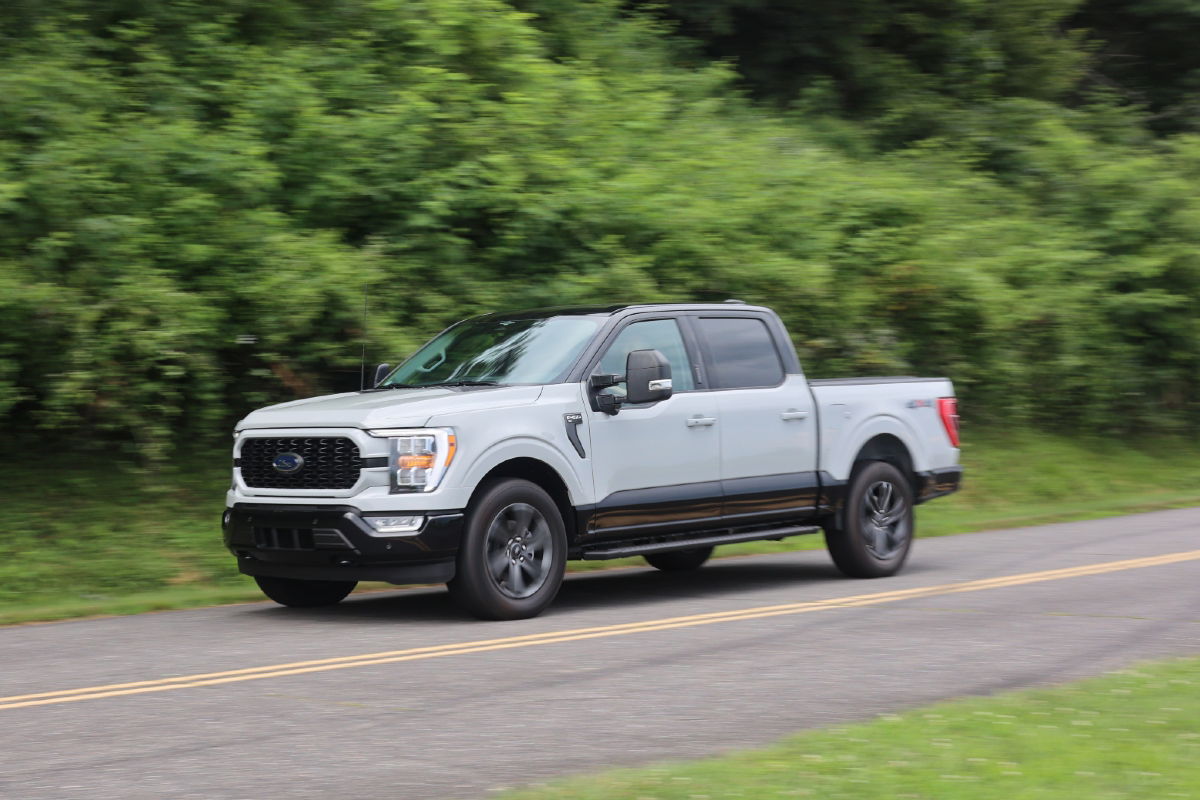
What is it?
The Ford F-150 really needs no introduction, it’s an iconic model and it’s the best-selling vehicle in the USA. But now it’s headed our way, with Ford Australia teaming up with RMA Automotive to convert the wildly popular pickup to right-hand drive.
We got an early preview of what to expect in Australia in the next few months, driving the incoming F-150 XLT that will soon join the local line-up in a recent trip to the US. We spent several days behind the wheel to get a good impression of the ‘F Truck’ we’ll soon have here to compete against the Ram 1500 and Chevrolet Silverado 1500.
Does it have any racing pedigree?

The F-150 may be a ‘working-class truck’ historically, but it has amassed quite the racing heritage over the years. These days it’s the basis for Ford’s entry in the NASCAR Craftsman Truck Series and is used as the hero model for the blue oval’s off-road racing programs, in particular its Trophy Trucks.
What’s under the bonnet?

Ford Australia will offer two versions of the F-150 in Australia – the XLT and Lariat – but both will be powered by the same engine, the EcoBoost 3.5-litre twin-turbo V6 petrol unit. That may surprise some, with the F-150 available with a 5.0-litre V8 engine in the US and Australia having a fondness for bent-eights, but there are some very good reasons why Ford made this decision.
For starters, the V6 doesn’t miss out on any power and actually makes more torque than the V8. The EcoBoost is rated at 298kW of power and 678Nm of torque while the V8 makes 298kW and 555Nm.
Despite the extra pulling power, the EcoBoost also uses less fuel than the V8. The claimed US economy rating is 11.7-litres per 100km for the V6 and 12.3L/100km for the V8. It’s worth noting that Ford Australia has opted for the largest fuel tank possible, measuring 136-litres, which gives the F-150 EcoBoost a driving range of more than 1000km.
The EcoBoost engine is paired to a 10-speed automatic transmission and a shift-on-the-fly 4×4 system, which is well-matched and suits the character of the F-150.
On our US drive the F-150 pulled strongly, with a nice linear power delivery, that didn’t have us missing the V8. It’s a refined engine too, feeling well-mannered at low speeds or on the freeway.
How does it handle?

For a very large ute with a ladder-frame chassis, this latest F-150 is a very pleasant pickup to drive. That shouldn’t be too surprising, as this is the 13th generation F-150 so Ford has had plenty of time to fine-tune the experience but it’s still impressive.
The steering is nicely-weighted and direct and the ride is well composed, even with only modest weight in the tray. Ford Australia has confirmed it will tow 4500kg, 1000kg more than the best the Ranger can manage, but haven’t confirmed payload capacities, but it should be capable of working hard.
The biggest test will come once Ford Australia and the RMA Automotive team have done their work to convert it to right-hand drive, as any mistake or corner cutting could have a detrimental impact on its driving character. But there’s no evidence of that yet, given Ford Australia’s extensive development period and investment in getting this project right.
Where would you most like to drive it?
Australia! It’s not long now until the F-150 reaches local roads after more than 12 months of anticipation. The F-150 should shake-up the US pickup contest here, with Ram and Chevrolet both enjoying a surprisingly large audience for these super-sized utes.
What’s the interior like?

The F-150 has an expansive cabin, with a huge amount of space both in the front and the back. This will be one of the major selling points over the Ranger (or an equivalent-sized ute) as the F-150 has enough space to fit five adults in relative comfort. There’s loads of legroom and the tall room means even adults 180cm tall will find the rear room generous.
There’s also plenty of practical features, including a plethora of cup holders, bottle holders, small item storage spaces and even a fold-out arm-rest lid that doubles as a workspace between the front seats. There’s also under-seat storage in the back, so you can keep valuables out of sight and locked inside.
As for the tray, Ford is offering two sizes of F-150 locally, a standard wheelbase (SWB) and a long wheelbase (LWB). The tray in the SWB F-150 models measures 1704mm long, 1285mm wide and 54mm deep and the LWB variants extend that length to 2004mm.
How much does the Ford F-150 cost?
Even though it won’t reach showrooms until late September or early October Ford Australia has already released pricing and other details for the local F-150 range.
The XLT will be priced from $106,950 for the SWB and $107,905 for the LWB, while the Lariat SWB starts at $139,945 and the Lariat LWB from $140,900.
Would I buy one?

Having spent time in the F-150 it’s easy to see why buyers are flocking to these US pickups in big numbers in Australia. The imposing size, spacious cabin, effortless performance and additional practical capabilities makes them a tempting proposition.
So much so that I suspect the issue will not be whether or not Ford can find enough people to buy F-150s but whether Ford Australia can find enough F-150s to meet demand.














Discussion about this post